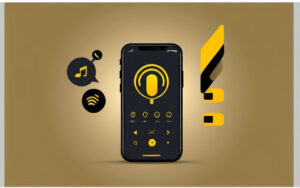Design Systems are an invaluable tool in the arsenal of any industry – and telecom is no exception. As a Lead UX Designer working closely with telecom services, I’ve witnessed the transformative impact of implementing Design Systems.
Let’s explore how leveraging Design Systems in telecom can create consistency and efficiency.
- Streamlining design: Design Systems offer a centralized collection of reusable design elements such as colors, typography, and components. This streamlining leads to a consistent look and feel across all touchpoints in the telecom sector, enhancing the brand image.
- Enhancing collaboration: Design Systems facilitate collaboration among designers, developers, and stakeholders. With a single source of truth, teams can work more cohesively, ensuring that telecom services are developed with consistency.
- Accelerating development: Time is of the essence in the telecom industry. Design Systems allow for the reuse of components, significantly reducing the development time. This efficiency enables telecom companies to bring new features and services to market faster.
- Maintaining scalability: As telecom services expand, maintaining a consistent user experience becomes challenging. Design Systems ensure scalability, allowing telecom companies to grow without compromising on design quality.
- Facilitating innovation: With Design Systems handling the basics, designers can focus their energies on innovation. This creative freedom can lead to groundbreaking features and services in the telecom domain.
Leveraging Design Systems in telecom is crucial for creating consistency and efficiency. Through streamlined designs, enhanced collaboration, accelerated development, maintained scalability, and facilitated innovation, Design Systems are a game-changer in the telecom industry. Embrace Design Systems to catapult your telecom services to new heights of success.
Final thoughts
Galaxy UX Studio, with its expertise in Design Systems, offers comprehensive solutions to help companies in the telecom industry harness the full potential of their services. By leveraging our services, companies can achieve a higher level of consistency and efficiency in their design processes, ensuring a seamless user experience across all platforms and applications.
The streamlined designs provided by Galaxy UX Studio enable telecom companies to save valuable time and resources, as they no longer need to reinvent the wheel with each project.
Moreover, the enhanced collaboration tools foster better communication and cooperation among team members, leading to faster development cycles and improved product quality. Galaxy UX Studio’s emphasis on maintaining scalability ensures that telecom companies can adapt and grow without compromising on user experience.
Lastly, the studio’s commitment to facilitating innovation opens up new avenues for telecom companies to explore, enabling them to stay at the forefront of the industry and attract more customers. Embracing our design systems expertise is undoubtedly a game-changer for telecom companies, propelling them to unparalleled heights of success.














